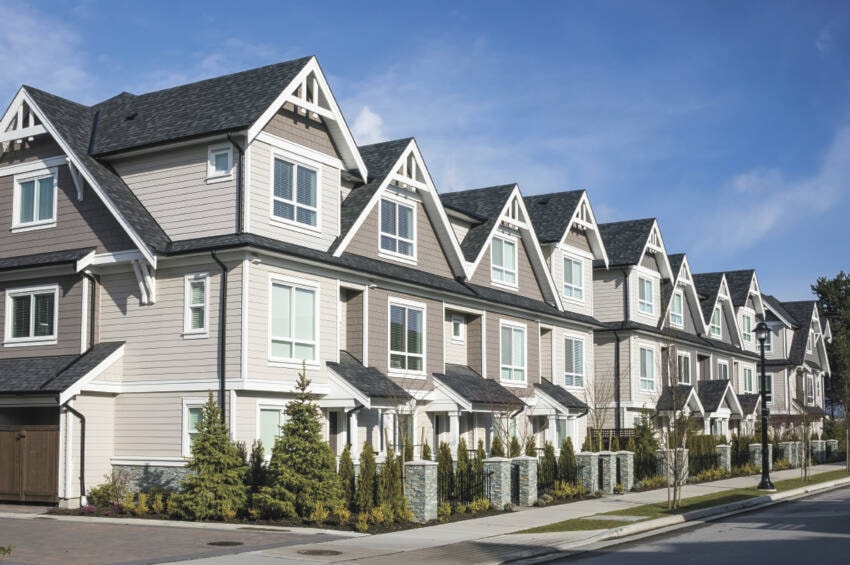White Rock council has received a staff report on housing needs that will serve as a first step in developing policy that will encourage a broader range of housing stock in the city.
The report was signed by Greg Newman, planning and development services acting director, as one of his last acts before moving on from the city.
It identifies six basic categories of housing need in White Rock: affordable ownership housing, rental housing, special needs housing, seniors housing, family housing and, shelters and housing for people at risk of homelessness.
The report, presented at council’s Nov. 22 meeting, was mandated by the provincial Ministry of Municipal Affairs and Housing in April of 2019, requiring that all B.C. municipalities complete housing needs reports for their communities by April of 2022, to be updated every five years.
The aim of the measure is to give the provincial government a better understanding of changes and demographics in housing, as well as to help communities better understand their needs and help local governments to implement policies and bylaws that respond to current and future housing needs.
Presenting the report to council on behalf of staff was Jada Basi of consulting firm CitySpaces, which assisted in the city in preparing it.
Starting point for the two-part process of preparing the report was a community profile created by Metro Vancouver staff, followed up with a public survey, led by city staff, Basi said.
CitySpaces became involved during the second stage, which included engagement activities with stakeholder groups and individuals, and preparation of a draft and final version.
Basi observed that the city already has diverse housing forms, except for ground-oriented multi-unit housing (particularly townhouse) for which there is a great demand from the public.
Expensive price points and limited availability are key obstacles to finding housing in the city – but Basi said the city already has policies and incentives in place that are effective in encouraging developers to build affordable housing.
But the current development pace is keeping up with demand and may actually outperform the Metro Vancouver estimate of 1,100 new units needed in the city by 2026.
A need for affordable home ownership options remains, she said, including secured purpose-built rental units, and accessible rental and non-market units.
READ ALSO: City of White Rock encourages input on housing priorities
READ ALSO: White Rock to establish city-made definition of affordable housing
Also needed are more family-friendly housing ranging from two to four-bedroom units and more seniors housing, including accessible down-sizing options and affordable units for low-income seniors.
While recognizing that White Rock is historically a land-constrained city without the sub-development potential of other municipalities, Basi pointed out that that 35 per cent of existing housing stock was built between 1961 and 1980, and another 10 per cent of the stock was built pre-1960.
“We have seen consistent new units being delivered online,” Basi noted. “but I do find that a large proportion of the stock is aging and getting older.
“Oftentime we consider that housing may need major repair, or might be at risk of redevelopment, potentially displacing tenants. Another indicator we look at is homes in need of major repair – and 5.1 per cent of homes in White Rock are in need of major repair.”
But that actually places White Rock below the regional and provincial averages, she said.
“It signals to me that there has been ongoing maintenance and potentially renovation and reinvestment into the existing housing stock…but there are 5.1 per cent of the homes that we would consider below adequacy or may be not considered livable.”
Basi said that one of the elements of a study of this kind is calculating the number of housing units required to accommodate the projected population growth.
“Looking at Metro Vancouver’s housing projections and unit projections the City of White Rock requires at least 1,100 more units by the year 2026. We’ve calculated this by the number of bedrooms (per unit) …and also by the housing mix, if the mix were to stay in the future as it is today, with no land use or policy intervention.”
Assuming the proportion of types of units remains the same (25 per cent one bedroom, 42 per cent two bedroom, 15 per cent three bedroom), Basi said the 1, 100 estimate would hold true.
But the report also examines what would happen if the city fostered a potential development shift scenario, Basi said, “using other development initiatives and community planning initiatives.”
Council endorsed a staff recommendation that the full report be made available on the City’s webpage.
